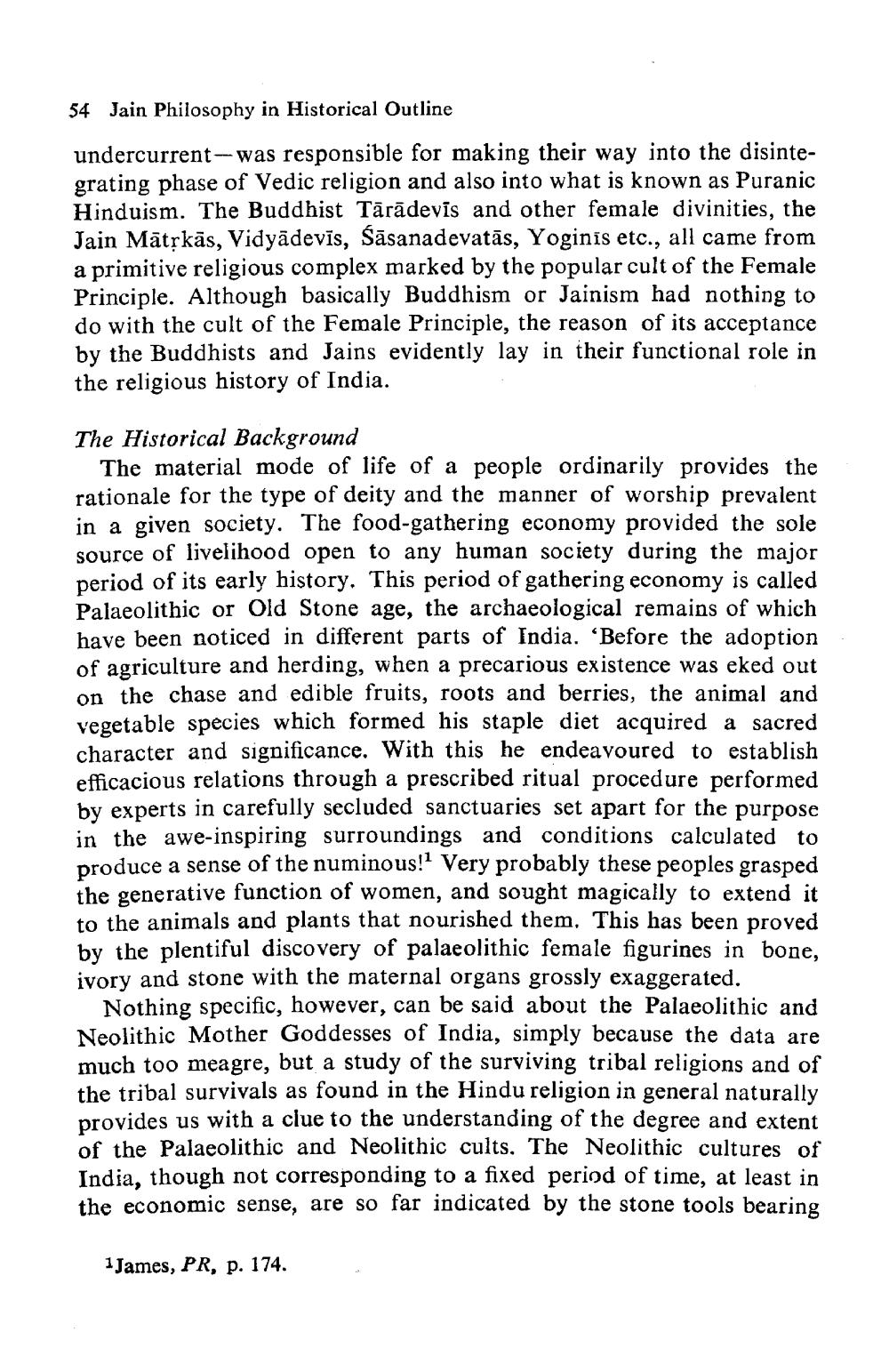________________
54
Jain Philosophy in Historical Outline
undercurrent-was responsible for making their way into the disintegrating phase of Vedic religion and also into what is known as Puranic Hinduism. The Buddhist Tārādevīs and other female divinities, the Jain Mātņkās, Vidyādevīs, Sāsanadevatās, Yoginis etc., all came from a primitive religious complex marked by the popular cult of the Female Principle. Although basically Buddhism or Jainism had nothing to do with the cult of the Female Principle, the reason of its acceptance by the Buddhists and Jains evidently lay in their functional role in the religious history of India.
The Historical Background
The material mode of life of a people ordinarily provides the rationale for the type of deity and the manner of worship prevalent in a given society. The food-gathering economy provided the sole source of livelihood open to any human society during the major period of its early history. This period of gathering economy is called Palaeolithic or Old Stone age, the archaeological remains of which have been noticed in different parts of India. “Before the adoption of agriculture and herding, when a precarious existence was eked out on the chase and edible fruits, roots and berries, the animal and vegetable species which formed his staple diet acquired a sacred character and significance. With this he endeavoured to establish efficacious relations through a prescribed ritual procedure performed by experts in carefully secluded sanctuaries set apart for the purpose in the awe-inspiring surroundings and conditions calculated to produce a sense of the numinous!! Very probably these peoples grasped the generative function of women, and sought magically to extend it to the animals and plants that nourished them. This has been proved by the plentiful discovery of palaeolithic female figurines in bone, ivory and stone with the maternal organs grossly exaggerated.
Nothing specific, however, can be said about the Palaeolithic and Neolithic Mother Goddesses of India, simply because the data are much too meagre, but a study of the surviving tribal religions and of the tribal survivals as found in the Hindu religion in general naturally provides us with a clue to the understanding of the degree and extent of the Palaeolithic and Neolithic cults. The Neolithic cultures of India, though not corresponding to a fixed period of time, at least in the economic sense, are so far indicated by the stone tools bearing
1James, PR, p. 174.




